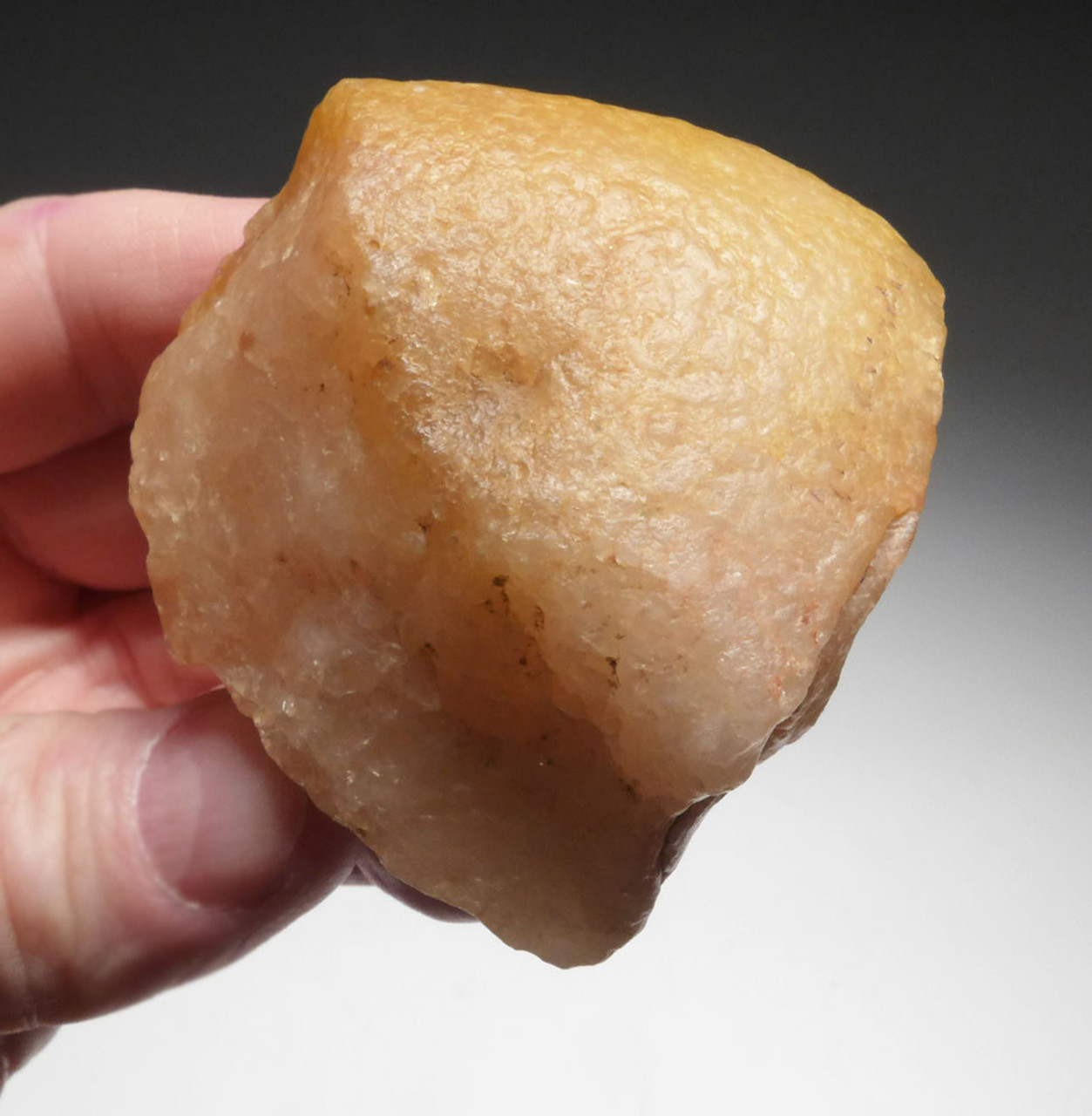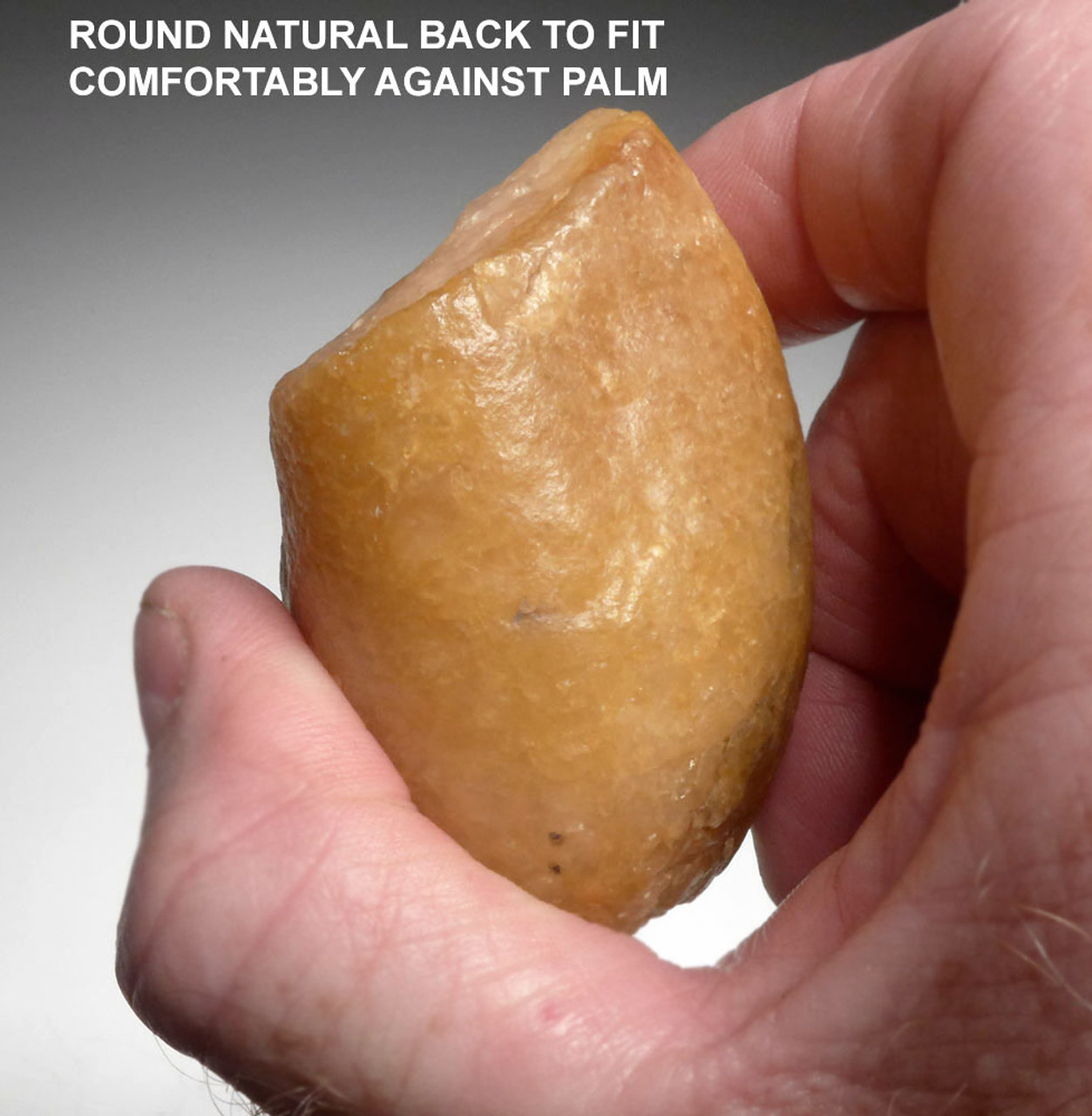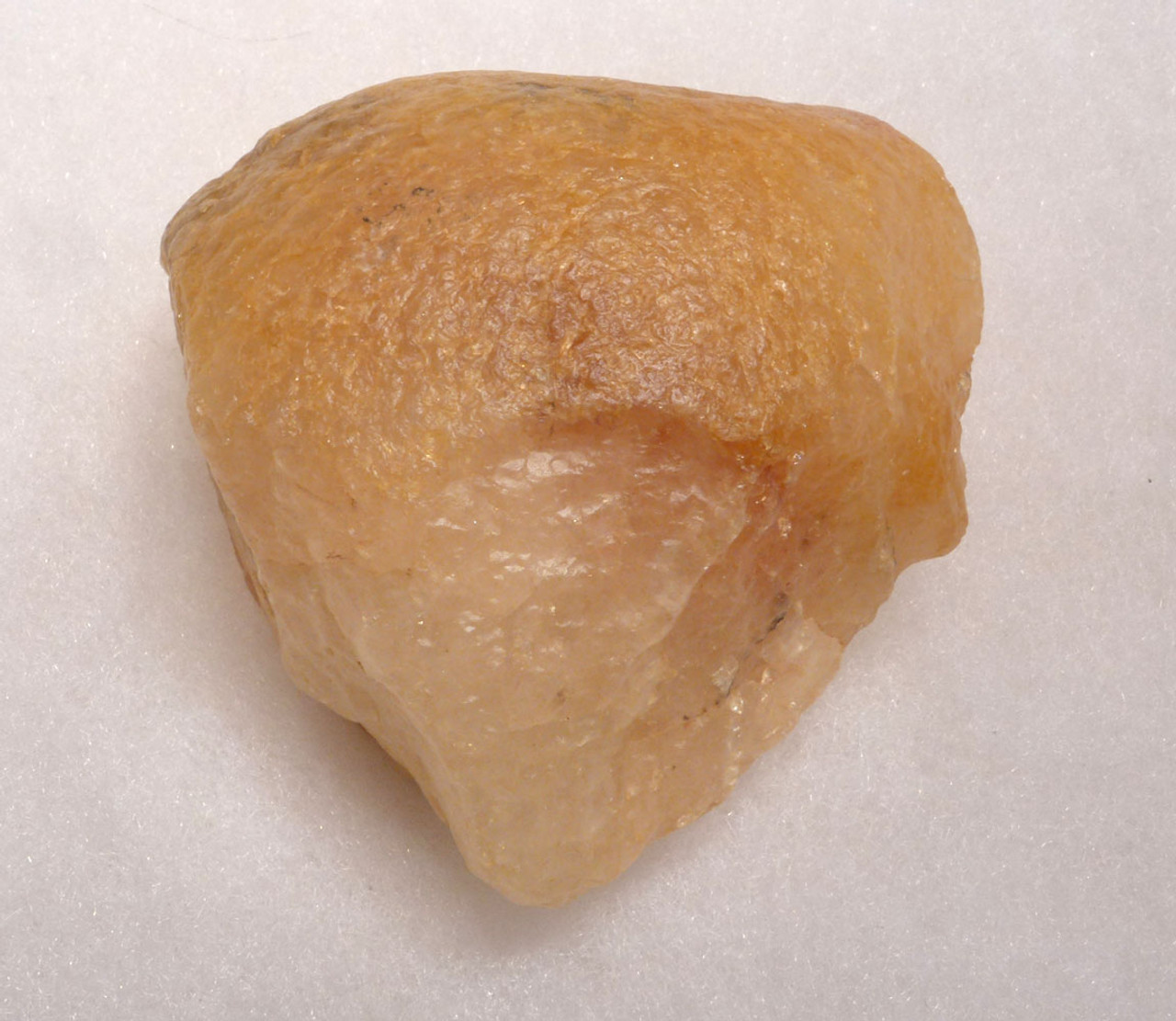Product Description
Despite working with Paleolithic African tools for over 23 years, this is one of only three (all from same collection) OLDOWAN PEBBLE CHOPPER AXES we have ever seen or handled coming from Mauritania. While much later hand axes of the Acheulean tradition are known from Mauritania, and a plethora of tools from the Neolithic can be found, the Oldowan which is the oldest tool technology, is not very well known from this region. There were only three of these pebble choppers in the entire collection we acquired, an emphasis on the sheer rarity of such specimens. Of those three, this was the smallest pebble axe but it was also the only one with a pointed tip.
This Lower Paleolithic pebble axe was made in the Mode I style on a solid quartz cobble stone. The chopping edge is perfect and shows the classic zig-zag pattern that only human-flaked tools exhibit. The flaking was oriented to create a pointed tip - rare for pebble axes! The quartz is covered in a natural "desert varnish" patina from hundreds of thousands of years of desert exposure. This has colored the quartz to a wonderful golden orange hue. Aside from coming from an extremely rare location, this is a perfect candidate for demonstrating the earliest human stone tool of the Oldowan Tradition from the Lower Paleolithic Period.
We acquired this extremely rare Stone Age artifact from a 70+ year French collection which is the only way you can acquire such an object as Mauritania has forbidden removal of all of their artifacts, for many decades. Despite its patina, the quartz still retains a mesmerizing sparkle in strong light. All cutting edges are still sharp due to the extreme hardness of the quartz. If you were to make a cast of this PREMIUM Lower Paleolithic artifact, it would be the most perfect, reference example to teach with in an academic setting as literally typifies exactly all that make up the Oldowan Mode I tool technology in these pebble axes. There is even a flaked area on the proximal end where held, to improve the comfort of the user when the axe is in hand.
This wonderfully aesthetic specimen is truly a museum-class example. The chopping edge is complete and undamaged as made with no modern handling damage. It shows a chisel end made by several opposing strikes. An ideal hand axe for butchering large hunted game of the time such as prehistoric giraffe, bison or elephants. Supreme and INTELLIGENT workmanship throughout.
WARNING: There have been several of these "pebble choppers" that have appeared on the market that seem to be similar in look and color, but are nothing more than broken rocks. Many open desert deposits containing Paleolithic tools are also littered with hundreds of thousands of simple rocks, in concentrated areas, that never were stone tools made by prehistoric humans. The major factor that separates a worthless desert-found rock from an actual human-made stone tool, are aspects of the flaking. A broken cobblestone is NOT a hand chopper! There are specific angles and types of flaking techniques that impart a unique geometry and characteristic to where and how a stone is flaked, that separates it from a rock run over by a truck and broken, versus one that was carefully flaked by human hands to be a Paleolithic tool. If the seller cannot explain the difference then they most certainly CANNOT TELL THE DIFFERENCE.
HISTORY
Oldowan pebble tools are THE FIRST recognized tools invented by the earliest of primitive humans from Africa. The Oldowan (or Mode I) was a widespread stone tool archaeological industry (style) in prehistory. These early tools were simple, usually made with one or a few flakes chipped off with another stone. Oldowan tools were used during the Lower Paleolithic period, 2.6 million years ago up until at least 1.7 million years ago, by ancient Hominins (early humans) across much of Africa. This technological industry was followed by the more sophisticated Acheulean industry. Oldowan stone tools are simply the oldest recognizable tools which have been preserved in the archaeological record. Early species of Homo such as H. habilis and H. ergaster are believed to be the primary tool makers of the industry during much of its use. Early Homo erectus appears to inherit Oldowan technology and refines it into the Acheulean industry beginning 1.7 million years ago.
The term Oldowan is taken from the site of Olduvai Gorge in Tanzania, where the first Oldowan stone tools were discovered by the archaeologist Louis Leakey in the 1930s. Some contemporary archaeologists and palaeoanthropologists prefer to use the term Mode 1 tools to designate pebble tool industries (including Oldowan), with Mode 2 designating bifacially worked tools (including Acheulean handaxes), Mode 3 designating prepared-core tools, and so forth.
There is a flourishing of Oldowan tools in eastern Africa, spreading to southern Africa, between 2.4 and 1.7 mya. At 1.7 mya., the first Acheulean tools appear even as Oldowan assemblages continue to be produced. Both technologies are occasionally found in the same areas, dating to the same time periods. This realization required a rethinking of old cultural sequences in which the more "advanced" Acheulean was supposed to have succeeded the Oldowan. The different traditions may have been used by different species of hominins living in the same area, or multiple techniques may have been used by an individual species in response to different circumstances.
By 1.8 mya early Homo was present in Europe, as shown by the discovery of fossil remains and Oldowan tools in Dmanisi, Georgia. Remains of their activities have also been excavated in Spain at sites in the Guadix-Baza basin and near Atapuerca. Most early European sites yield "Mode 1" or Oldowan assemblages. The earliest Acheulean sites in Europe only appear around 0.5 mya. In addition, the Acheulean tradition does not seem to spread to Eastern Asia. It is unclear from the archaeological record when the production of Oldowan technologies ended. Other tool-making traditions seem to have supplanted Oldowan technologies by 0.25 mya.
No one can doubt the importance that pebble tools hold in the history of human development. Their very emergence in Africa allowed the earliest humans to butcher animals for their meat - the needed nourishment that allowed humans to survive and flourish to one day populate and rule the earth.
 US DOLLAR
US DOLLAR
 EURO
EURO
 AUSTRALIAN DOLLAR
AUSTRALIAN DOLLAR
 CANADIAN DOLLAR
CANADIAN DOLLAR
 POUND STERLING
POUND STERLING






















